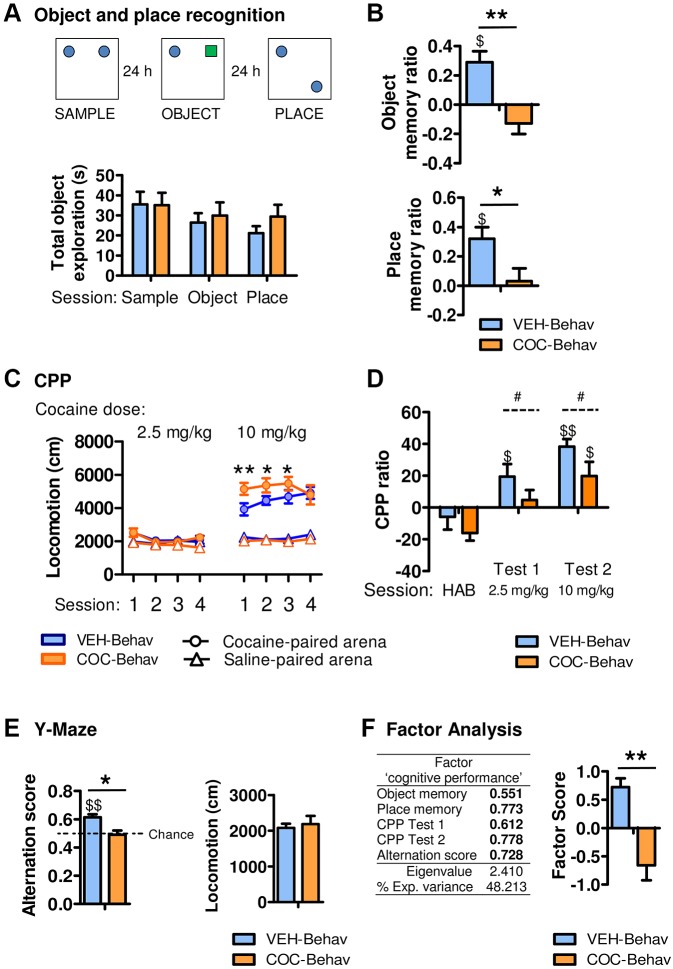Fig. 3.
Cocaine withdrawal induces a persistent impairment in hippocampal-dependent memory and sensitization to its hyperlocomotor effects. The cocaine-withdrawn mice showed a normal object exploration interval during the recognition sessions (A) but were unable to remember and discriminate the novel or the displaced objects (B). (C) In the cocaine-induced CPP paradigm, the COC-Behav mice showed increased hyperlocomotion when exposed to 10 mg/kg of cocaine, but not in the saline-paired sessions or when challenged with the 2.5 mg/kg cocaine dose, that induced no apparent stimulatory response (HAB, habituation session). (D) Conditioning was blunted in the COC-Behav mice. (E) The COC-Behav mice were also impaired in their Y-maze spontaneous alternation in the absence of locomotor deficits. (F) A factorial analysis that included all memory measures confirmed a worse cognitive performance in the COC-Behav mice. Results are represented as means±s.e.m. Student's t-tests for VEH versus COC comparisons: *P<0.05, **P<0.001. One-sample Student's t-tests were used to compare means versus zero (B,D) or versus 0.5 (E): $P<0.05, $$P<0.001 (in B, this comparison indicates a preference for the novel or the displaced object versus the familiar or the static one; in D, it indicates a preference for the cocaine-paired compartment versus the saline-paired one; in E, it indicates a frequency of spontaneous alternation over chance performance). ANOVA treatment effect: #P<0.05.

